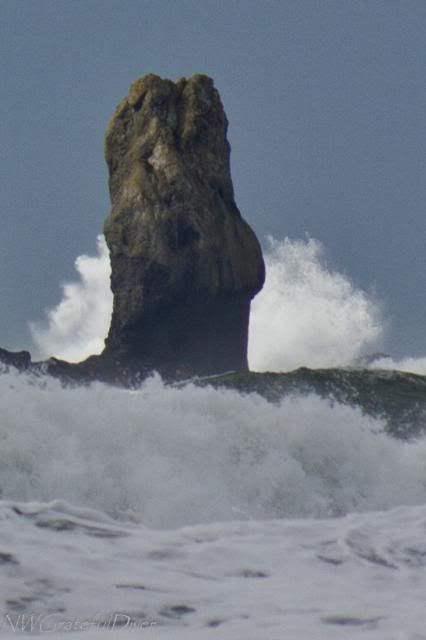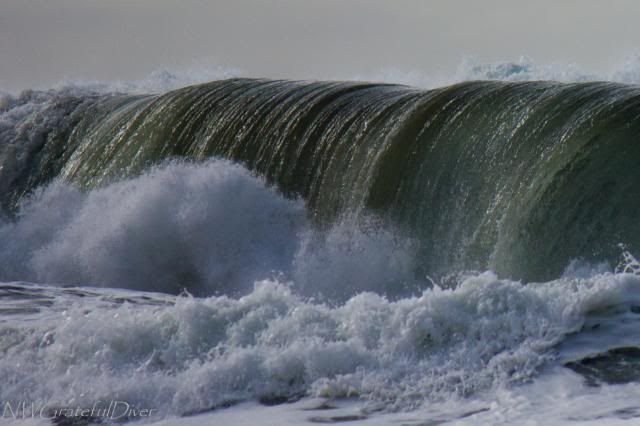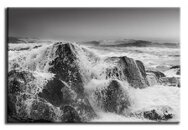You are using an out of date browser. It may not display this or other websites correctly.
You should upgrade or use an alternative browser.
You should upgrade or use an alternative browser.
Diver Training: Kick-up the intensity, or not?
- Thread starter DCBC
- Start date
Please register or login
Welcome to ScubaBoard, the world's largest scuba diving community. Registration is not required to read the forums, but we encourage you to join. Joining has its benefits and enables you to participate in the discussions.
Benefits of registering include
- Ability to post and comment on topics and discussions.
- A Free photo gallery to share your dive photos with the world.
- You can make this box go away
Skin ditch & recovery. I've done it twice as a class requirement ... 2001, as part of my YMCA OW class, and again in 2004 as part of my NAUI Instructor training. The point of the exercise is to teach you how to remain calm during an in-water emergency. If you don't remain calm and do everything methodically, it's really hard. If you stay calm, and control your motions and emotions, it's not very difficult at all. It's more a mental exercise than a physical one.
Exactly. Some pool exercises have the purpose of teaching the Diver to cope with anxiety. Anxiety can lead to panic and panic has led to the deaths of many divers.
I missed the clarification. Surface swims in full scuba equipment ain't any big whoop ... you just inflate your BCD, lay back and kick.
Yes. It demonstrates to the student in a real way how current and wave height are important factors in the dive planning process. Water temperature, visibility, team work, and navigation skills are also important factors to be considered.
- Messages
- 93,793
- Reaction score
- 92,485
- Location
- On the Fun Side of Trump's Wall
- # of dives
- 2500 - 4999
Can't jump off of those ... the water's too shallow.
Here ... put the G in giant stride ...

... then kick out through the surf zone ...

I saw some surfers headed out into that, actually. But they were young men ... maybe in their early 20's ... and most guys are a bit brain-dead at that age ...
... Bob (Grateful Diver)
covediver
Contributor
Thanks for all your thoughtful responses to comments on this thread. It is one of the better topics I have seen in a while.
The thing that I like about your training regimen is that it gives students a sense of the environment in which they may find themselves operating, wheter intended or not. Some call it "sea sense' some call it "waterman", whatever it is it need to be inculcated. Your system seems to do that for your students.
Part of it is recognizing personal capacities and deciding what to do given the realities of one's circumstances. At a younger age, passing the annual swim test to maintain research diver certification was easy. As I got older, it became more challenging, so I started swimming laps both freestyle and with fins and snorkel to keep up conditioning especially during the winter. That activity led to discovering masters swimming and fin swimming, activities that I am better suited to and find quite enjoyable from a physical conditioning and social aspect. I also now have to lift weight more frequently to keep a level of conditioning for diving in some of the areas that I still frequent which are "gear intensive."
I was recently approached about the possibility of renewing my research diving credential for projects that might involve diving in the Arctic Ocean. I declined. While the gear and conditions don't concern me, the remoteness and logistics do. So I am content to do beach dives and boat dives in less remote parts of the last frontier. This is a long winded way of saying that with intensity of your training, you are providing the students with experiences that I took as a condition of certification and have served me well in the intervening 30 years.
The thing that I like about your training regimen is that it gives students a sense of the environment in which they may find themselves operating, wheter intended or not. Some call it "sea sense' some call it "waterman", whatever it is it need to be inculcated. Your system seems to do that for your students.
Part of it is recognizing personal capacities and deciding what to do given the realities of one's circumstances. At a younger age, passing the annual swim test to maintain research diver certification was easy. As I got older, it became more challenging, so I started swimming laps both freestyle and with fins and snorkel to keep up conditioning especially during the winter. That activity led to discovering masters swimming and fin swimming, activities that I am better suited to and find quite enjoyable from a physical conditioning and social aspect. I also now have to lift weight more frequently to keep a level of conditioning for diving in some of the areas that I still frequent which are "gear intensive."
I was recently approached about the possibility of renewing my research diving credential for projects that might involve diving in the Arctic Ocean. I declined. While the gear and conditions don't concern me, the remoteness and logistics do. So I am content to do beach dives and boat dives in less remote parts of the last frontier. This is a long winded way of saying that with intensity of your training, you are providing the students with experiences that I took as a condition of certification and have served me well in the intervening 30 years.
Can't jump off of those ... the water's too shallow.
LOL. The problems not the jump but the fall. You seldom have an opportunity to jump because the rocks are sometimes covered with rime ice! Your unsteady on your feet and then there's the waves and surf... Lots of fun.
This is a live web cam of Peggy's cove: Nova Scotia Webcams - Peggys Cove Lighthouse | South Shore (a popular local check-out site). Entry is done on the right side of the photo (the waves in the center and left would likely kill a diver against the rocks).
I dunno, I've heard stories about Navy divers sitting at the back of the boat and having a smoke, with their skin bends audibly popping, as they wait for the on-boat chamber ride after a no stop dive with deco obligation.
That's a bit of fiction. When we come up from a deco dive in a commercial environment, we ascend as quickly as allowable. We reach the surface and then the race starts to get unhatted, undressed, in dry clothes if necessary, and then back in the chamber and back down to pressure in less than 5 minutes. While it's not difficult to get done (provided a shackle isn't stuck or cam on the hat isn't frozen) there is no time to dilly dally. It is a real rush.
BVickery
Contributor
Having relatively recently gotten my C-Card, I can attest that the swimming level of some people who try this out is lacking. You could tell by looking at them that they were NOT comfortable in the water. I have confidence in my swimming skills to know I could accomplish even this supposedly 'hard' pre-test (as long as I learned the before mentioned kicking only treading water portion).
That's a bit of fiction. When we come up from a deco dive in a commercial environment, we ascend as quickly as allowable. We reach the surface and then the race starts to get unhatted, undressed, in dry clothes if necessary, and then back in the chamber and back down to pressure in less than 5 minutes. While it's not difficult to get done (provided a shackle isn't stuck or cam on the hat isn't frozen) there is no time to dilly dally. It is a real rush.
Ah yes - the "Fizz" time! Just so the non-commercial types are clear on this: what SL27 is describing is "SurDO2" - or "surface decompression on oxygen." We make our dive, then do our in-water stops; after the completion of the last water-stop, we must surface ( at the proscribed rate of ascent ), strip out of our gear, & enter the outer lock of the double-lock recompression chamber. As soon as the outside tender has "dogged" the outer-lock hatch, we go on O2 supplied by a "built-in-breathing-system" or "b.i.b.s." oxygen mask, and, using an internal air supply valve, compress the outer-lock to an equivalent depth of 40.' The "inner-lock" had already been pressureized to 40' by surface crew in preparation for our deco. When outer-lock & inner-lock pressures are equal, the inner-lock hatch can be opened, and the remainder of the deco. can be done in the supine position, with fluids to drink on our "air breaks," piss-can to relieve our bladders in, and skin mags. to pass the time. When chamber time is complete, chamber pressure is evacuated at a prescribed rate, and the diver returns to "surface."
Fun, eh?
Now back to our regularly scheduled discussion.
Regards,
DSD
Having relatively recently gotten my C-Card, I can attest that the swimming level of some people who try this out is lacking. You could tell by looking at them that they were NOT comfortable in the water. I have confidence in my swimming skills to know I could accomplish even this supposedly 'hard' pre-test (as long as I learned the before mentioned kicking only treading water portion).
I think the test is only difficult if compared to the in-water entry requirements of some other diver training programs (weak swimmers allowed). Other than basic fitness, there is a "trick" so some exercises (such as Bob described for Doff and Donn). Most swimmers I know can tread water; the tread with the hands out (legs only) is relatively easy if you relax and put your head back into the water. It can be difficult if you hold your head vertical (out of the water).
The swimming requirement isn't designed to be difficult (nor is any other part of the program). That said, if you can't swim, or are 100 pounds overweight, it would be impossible to get through the program. Ninety-nine percent of students pass the in-water evaluation on the first attempt. I speak with each student individually and detail the program before they enroll. If a prospective student questions whether the program is for them, I refer them to a PADI shop down the road. It's unlikely that every training program that's available will appeal to everyone. In the past, I've simply provided an alternative.
vladimir
The Voice of Reason
- Messages
- 44,714
- Reaction score
- 65,404
- # of dives
- I just don't log dives
Despite having aced the treading water test.That said, if you can't swim, or are 100 pounds overweight, it would be impossible to get through the program.
Similar threads
- Replies
- 0
- Views
- 512
- Replies
- 1
- Views
- 505
- Replies
- 120
- Views
- 6,229





